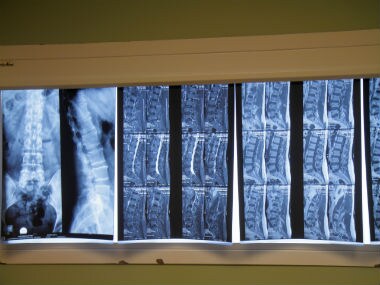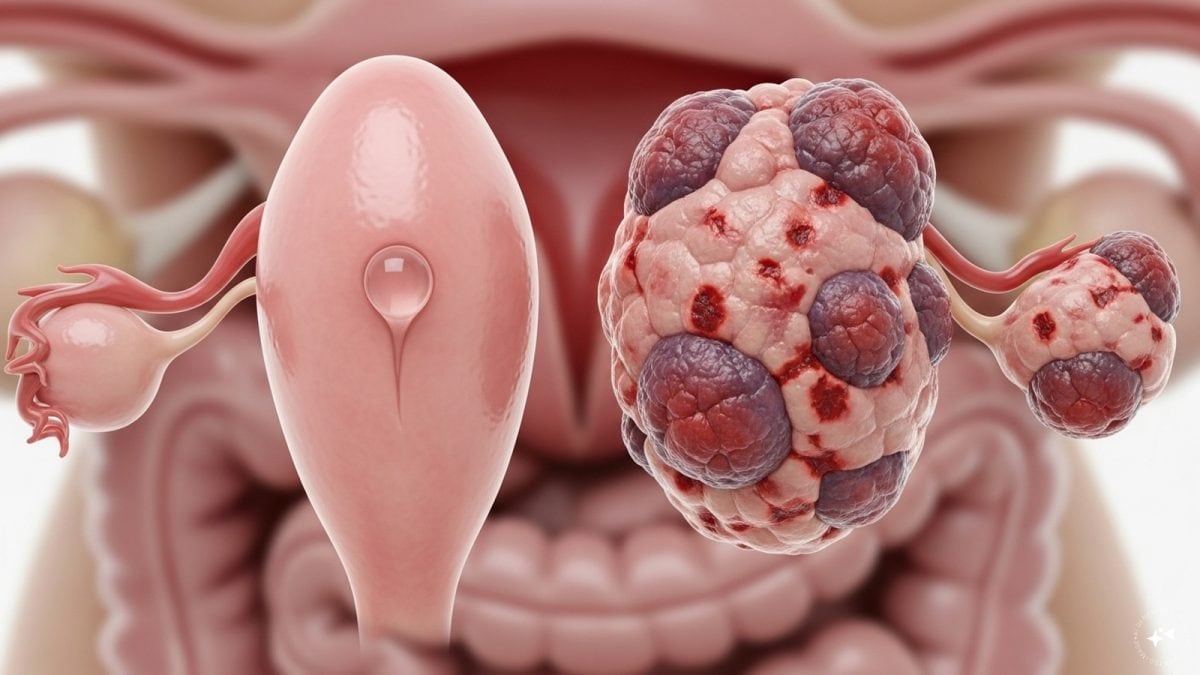We’ve all heard horror stories about the guy in the gym who lifted incredible amounts of weight till one day he slipped a disc. Or about that one colleague who smoked incessantly and herniated a disc one fine day, just walking her dog. Slipped disc or disc herniation is an incredibly common and painful condition that affects the spine. [caption id=“attachment_7504341” align=“alignleft” width=“380”]  Representational image. Image source: Getty Images[/caption] On World Spine Day today (16 October), here’s everything you need to know about the spine and why spinal discs sometimes come out of alignment.
What is a slipped disc?
Our spine — from the neck down to the lower back — has 33 bones or vertebrae stacked on top of each other. In-between the vertebrae are cushiony discs that contain a central ring known as nucleus pulposus and an outer, rubbery ring called annulus. Sometimes, when there’s an unusual amount of pressure on the back (an amount of pressure that the person is not used to), the nucleus pulposus can bulge or come out through a rupture in the annulus - this is known as a ruptured or herniated disc. This can create pressure against one or more of the spinal nerves which can cause pain, weakness or numbness in the neck and arm. Depending on the severity of herniation, a slipped disc is one of three types:
- Prolapse: when the ruptured disc bulges out between the vertebrae, but its outermost layer is still intact. This is the least severe of the three.
- Extrusion: when the soft nucleus pulposus of the ruptured disc spills out but the tissue that has come out is still connected to the disc.
- Sequestration: when the nuclear tissue enters the spinal canal and is no longer directly attached to the disc.
Herniation can be of the cervical spine (neck region) or lumbar spine (lower back).
Causes and symptoms
Several factors, like ageing, weight gain, smoking can increase the risk for a slipped disc. The most common causes are:
- Loss of elasticity in spinal discs with ageing.
- An accident or severe injury.
- Obesity is one of the reasons for lower back pain.
When herniation is in the cervical spine, the symptoms present as pain in the neck, shoulder, and medial forearm, with numbness on the medial forearm and medial hand. Herniation in the lumbar spine can result in sensory loss and back pain radiating towards the thigh and lower leg, hip flexion and adduction (movement of the leg towards and away from the body) weakness. Some of the most common symptoms of a slipped disc are:
- Sudden and severe shooting pain in the lower back region.
- Sciatic nerve pain: when herniated disc tissue irritates a nerve root in the region of the lumbar spine, it often causes typical sciatic pain - pain that radiates down one leg and into the foot.
- Cauda equina syndrome: a rare condition in which the patient experiences numbness in the buttocks or signs of paralysis, along with disrupted functioning of the bladder or bowels.
Prevention methods
Apart from precautions such as lifting things the right way, there are some exercises you can do to strengthen the spine. First, the precautions:
- Lift heavy items with proper technique: bend the knees, keep the back straight and use the leg muscles to lift the load.
- Maintain a healthy weight: excess weight puts pressure on the lower back.
- Sleep on a firm mattress: this reduces the chances of back pain.
- Try and correct your posture and stretch every now and then, to prevent backaches.
- Try and avoid high-heeled shoes that can cause lower back pain.
- Exercise regularly to increase the flexibility of the body.
Three exercises to strengthen the back
Make sure you warm-up for at least five minutes before you do these exercises aimed at increasing strength and flexibility in the spine. You could, for instance, jog on the spot, and do jumping jacks, shoulder rotations, hip rotations, forward bend, bend gently from side to side and do other mobility exercises that help you get started. Ease into the workout. If you have back pain or a prior spinal injury, please consult your doctor before attempting any exercises. Modified cobra
- Lie down on your stomach on a mat.
- Place your palms next to each shoulder.
- Now keeping your elbows on the mat, lift the chest off the mat - lift as high as you can without taking the elbows off.
- Try to look up without scrunching your face.
- Hold this position for 30 seconds.
- Repeat twice more, holding for an extra 10 seconds each time.
The Bridge
- Lie down on your back, with your knees bent, feet slightly apart and arm by your sides.
- Now place the palms on the mat, fingers pointing towards the feet.
- Gently roll the hips and back off the mat, till your weight is balanced between your feet and shoulders.
- Hold this position for 30 seconds.
- Repeat twice more, holding for an extra 10 seconds each time.
Elbow Plank
- It helps to do this exercise in a place where you can see your profile in a mirror.
- Lie down on the mat on your stomach.
- Place your palms next to the shoulders.
- Lift the body up into plank, supporting your weight on your elbows and toes.
- Check the position of your hips in the mirror - make sure they are not raised or slumped.
- Keep your palms on the mat throughout, and hold this position for 30 seconds.
- Repeat twice more, holding for an extra 10 seconds each time.
Health articles in Firstpost are written by myUpchar.com, India’s first and biggest resource for verified medical information. At myUpchar, researchers and journalists work with doctors to bring you information on all things health. For more information, read our article on Slipped Disc: Causes, Types, Symptoms, Treatment, Prevention_._


)

)
)
)
)
)
)
)
)



